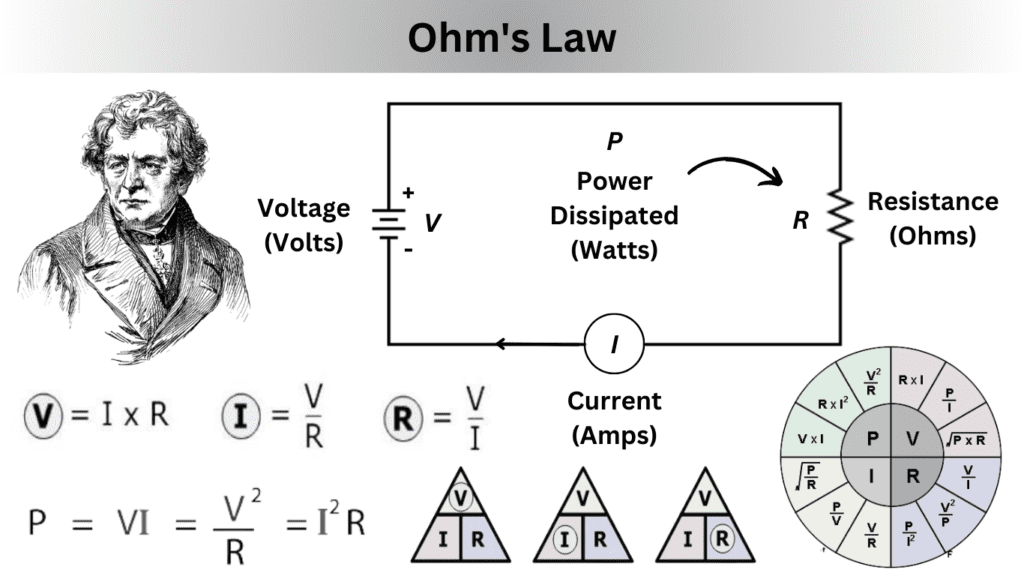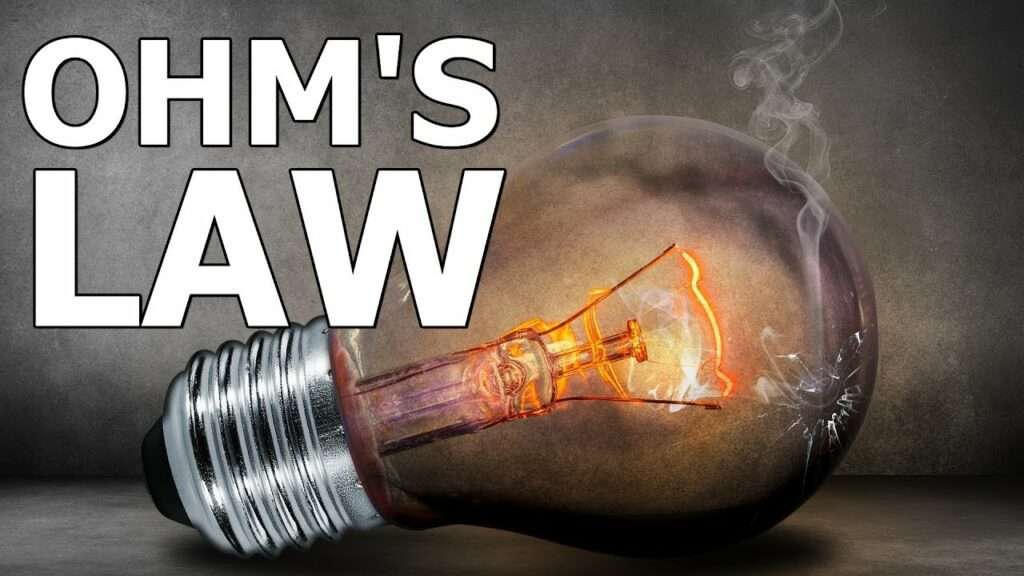German physicist Georg Simon Ohm developed Ohm’s law, which defines a basic connection between voltage, current, and resistance in electrical circuits. It asserts that the relationship between the voltage (V) across a resistor and the current (I) flowing through it is exactly proportional, and the resistance (R) of the resistor controls this relationship. Ohm’s law may be formulated mathematically as V = I * R. This law has several restrictions even though it is a cornerstone of electrical engineering and is applicable to many different electrical circuits. It only applies to linear resistive parts, and non-linear devices like diodes and transistors reduce its accuracy. Furthermore, the constant resistance that Ohm’s law presumes may not apply to circuits that are impacted by temperature variations.
While reactive parts like capacitors and inductors complicate alternating current circuits, it is best appropriate for DC circuits and AC circuits with constant resistance. Power ratings and material non-ideality are two issues that must be taken into account while designing a practical circuit. Despite these drawbacks, Ohm’s law is nevertheless a vital tool for the study and design of simple electrical circuits including resistive components. To offer correct insights for more complicated circuits, further rules and principles are needed.

What are Current, Voltage, and Resistance?
Current (I): The flow of electric charge in a circuit is referred to as current. It measures how quickly electric charges—typically electrons—move across a conductor. The letter “I” stands for current, which is denoted by the unit amperes (A). When a circuit is closed, current travels from the positive terminal of the voltage source (such as a battery) through the circuit’s components before returning to the negative terminal. The flow of electrons is in the opposite direction from the flow of current.
Electrical force that propels current flow in a circuit is voltage, commonly referred to as electrical potential difference (V). It is the difference in potential energy between two circuit locations. Voltage is expressed as and measured in Volts (V). A circuit’s charges move when a voltage is applied, resulting in a current flow. A voltage source, such as a battery or a power supply, is frequently used to deliver voltage.
Resistance (R) is the ability of a substance or component to obstruct the passage of current through it. It gauges how much a substance opposes the flow of electricity. Resistance is denoted by the letter “R” and is expressed in Ohms (). Ohm’s law states that the resistance acts as a constant of proportionality, causing the voltage across a resistor to be directly proportional to the current flowing through it. Ohm’s law may be formulated mathematically as V = I * R.
Statement of Ohm’s Law
Ohm’s Law states that the current (I) flowing through a conductor between two points is directly proportional to the voltage (V) applied across the two points, with the proportionality constant being the resistance (R) of the conductor. Mathematically, Ohm’s Law is expressed as:
V = I * R
Where: V = Voltage (in Volts, V)
I = Current (in Amperes, A)
R = Resistance (in Ohms, Ω)

Limitations of Ohm’s Law
- Non-linear devices: Diodes and transistors are examples of non-linear components that are not covered by Ohm’s Law, which is only applicable to linear resistive parts.
- Ohm’s Law implies a constant resistance, but in reality, materials’ resistance can vary with temperature.
- Components that depend on frequency: Ohm’s law may not entirely apply to circuits with reactive components and is most commonly applicable to DC circuits or AC circuits with constant resistance.
- Ohm’s Law does not take into account a component’s power rating, which might result in overheating and damage.
- Ohm’s Law presumes perfect conductors and resistors, but in reality, materials have non-ideal properties.
- Ohm’s Law’s assumption of conventional current flow, which might occasionally diverge from the real electron flow, is referred to as directional conduction.
Applications of Ohm’s Law in Daily Life
- Electrical Appliances: Ohm’s Law is used in designing and understanding electrical appliances. For instance, when you plug in an electronic device like a hairdryer or a toaster, the device’s resistance determines the current flowing through it, which, in turn, affects its power consumption.
- Lighting: Ohm’s Law is crucial in designing and using lighting systems. It helps in calculating the current required for a specific light bulb based on its resistance (impedance) and the voltage applied to it.
- Circuit Safety: Ohm’s Law is applied to ensure circuit safety in household wiring and electrical installations. By calculating the current flowing through a circuit and considering the resistance of wires and components, the appropriate wire gauge and safety measures can be chosen to prevent overheating and potential hazards.
- Battery Usage: In everyday gadgets like smartphones, laptops, and other battery-operated devices, Ohm’s Law plays a role in understanding battery life. It helps estimate how much current various components draw from the battery and how long the device can operate before needing a recharge.
- Electric Vehicles: In electric cars and bikes, Ohm’s Law is used to design and optimize the electrical system. It assists in determining the current drawn by the motors and other components, influencing the overall vehicle performance and battery efficiency.
- Resistors and LED circuits: Ohm’s Law is applied when working with resistors and LEDs, especially in do-it-yourself electronics projects. By calculating the resistor value based on the desired current and the LED’s forward voltage, one can ensure proper functioning and avoid damaging the LED.
- Power Electronics: In power electronic circuits, such as voltage regulators and power supplies, Ohm’s Law is essential for determining the current, voltage, and resistance values to regulate power output.
- Electronic Repairs: When troubleshooting and repairing electronic devices, Ohm’s Law helps in identifying faulty components, understanding voltage drops, and ensuring the proper functioning of circuits.
FAQs
Ohm’s Law is valid only for linear resistive elements, and it may not directly apply to non-linear components like diodes, transistors, and semiconductor devices.
Ohm’s Law is primarily applicable to DC circuits or AC circuits with constant resistance. In circuits involving reactive components like capacitors and inductors, the relationship between voltage and current becomes more complex due to phase differences and impedance.
Ohm’s Law assumes a constant resistance, but in real-world scenarios, the resistance of conductors can change with temperature. Some materials have positive temperature coefficients (resistance increases with temperature), while others have negative coefficients (resistance decreases with temperature).
Ohm’s Law assumes conventional current flow from positive to negative, while the actual flow of electrons (negative to positive) may be different, especially in electronic devices. However, this difference does not affect the application of Ohm’s Law in most practical circuits.
Ohm’s Law does not consider the power ratings of components in a circuit. Excessive current flowing through a resistor or any other component may lead to overheating and exceed its power rating, potentially causing damage.






